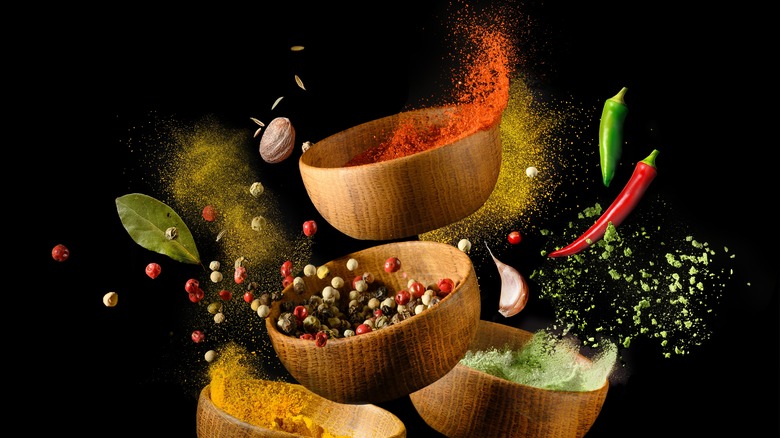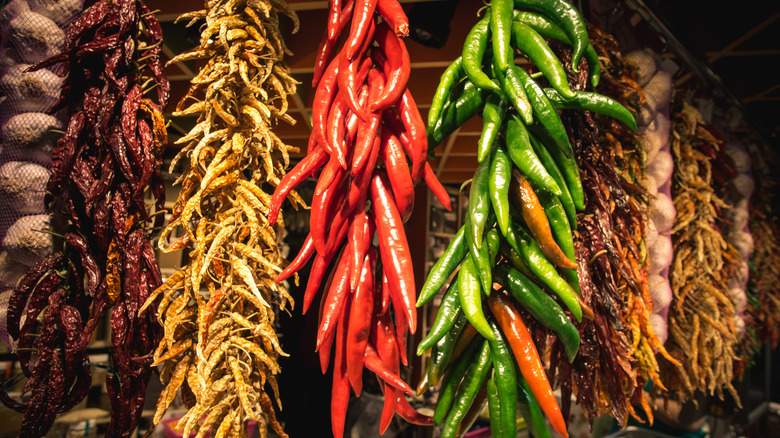Mix Chili Powders Of Different Heat Levels To Give Your Dishes Spicy Depth
Many people claim to love or hate spicy food, but in reality, most folks fit on a spectrum rather than cleanly inside one or another camp. Spices come from seeds, roots, leaves, stems, and bark, but not all of them are spicy in the sense of infusing your food with zingy heat. That honor typically goes to chili peppers, which contain various amounts of what are known as capsaicin compounds. The beauty is that you can control the levels of flavor and heat when mixing various chili powders.
Combining chili powders with distinct flavor profiles lets you cater to all taste palettes while creating peppery, multidimensional depth. A key is learning about individual chili peppers and how capsaicin ratings affect the heat that reaches your food –– and your mouth. Individual fresh peppers get a Scoville Heat Units (SHU) rating, with a lower number indicating milder heat sensations, which informs the powdered versions you'll mix for your own recipe blends. For example, a jalapeño pepper rates as low as 3,500 SHU, while a habanero can be 350,000 SHU, and the infamous ghost pepper sizzles with more than a million SHU. But apart from heat levels, the flavors of chili peppers are incredibly diverse, providing extra opportunities for mixing powders into smoky, sweet, fruity, or earthy food profiles.
Flavor profiles matter
But there's far more to consider than just increasing the heat levels in your blend. Finding your own spice persona involves a recognition of how each spice harbors unique flavor elements. Then you'll develop a sixth sense for mixing and layering powdered spices to ignite kitchen magic.
A good culinary rule of thumb is to start a powder mix with milder spices, then build gradually to a satisfying finale. Especially when new to spice mixing, go with something familiar like paprika. The basic sweet paprika has plenty of taste without overpowering the dish you're creating, while still adding a light touch of smokiness, depending on the version. Other mild choices could include ground ancho peppers for a rich earthy taste. Building from a mild foundation, experiment with adding medium-level spices such as jalapeño powders, which can have fruity undertones.
After building a pleasing flavor profile, tap into some heat with the likes of cayenne, habanero, ground chipotle, or a sizzling hot version of aleppo pepper. A little goes a long way, so be light-handed at first. This stage is also where to inject rich smoky flavor into Mexican dishes such as tacos, barbacoa, salsas, and carne asada. A custom blend could include cumin, powdered poblano, cacao, or Mexican cinnamon, balanced by lighter flavors including coriander, thyme, and cloves. Consider adding a sprinkling of pepper flakes for a final touch of heat for a blend that needs it or a spoonful of chili paste for good adhesion.

